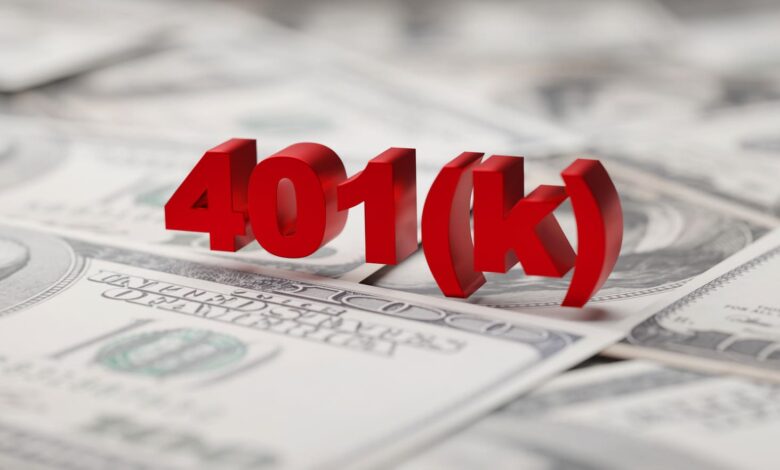8 Ways To Celebrate 401(k) Day And Boost Your Retirement Savings

📝 usncan Note: 8 Ways To Celebrate 401(k) Day And Boost Your Retirement Savings
Disclaimer: This content has been prepared based on currently trending topics to increase your awareness.
8 Ways To Celebrate 401(k) Day And Boost Your Retirement Savings
getty
The first Friday after Labor Day marks what the Plan Sponsor Council of America (PSCA) has dubbed National 401(k) Day. It was initiated by PSCA in 1996 and scheduled as such to mark the transition from work to retirement. This article offers actionable tips to help you commemorate the day and potentially boost your retirement savings.
How To Celebrate National 401(k) Day
1. Check Your Contributions And Strive For The Match
Imagine someone offering to give you free money. Would you turn it down? Probably not. This is precisely what the employer match is: free money in exchange for securing your own retirement. Most employers will match 50% of your contributions up to 6% of your salary.
For example, if your salary is $60,000 and you contribute $3,600, your employer will add $1,800 to your 401(k). That’s like a guaranteed 50% return on your investment even before market gains.
Companies have different matching structures, but the most important thing is to contribute enough to trigger the full employer match. Ask your HR representative if the match is available in your plan and how you can take advantage of this benefit. While a 401(k) without a match may still be worth it, why would you leave money on the table?
2. Increase Your Deferral
Say you are already enjoying matching contributions, another step you can take is to increase your monthly deferrals. While it might feel like a big jump to go from 6% to 10%, a slight increase is more manageable but incredibly effective. You can commit to increasing your 401(k) contribution by 1%, which, in the previous example, amounts to an additional $600 (or $50 per month).
For most people, a 1% increase won’t dramatically change their lifestyle. That’s probably less than what you spend on coffee each month. You might not even notice it in your paycheck. But over 20, 30, or 40 years, that 1% can translate to tens or even hundreds of thousands of dollars, thanks to compounding. Imagine if you regularly increase your deferral by 1% every 401(k) Day.
3. Project Your Retirement Income
It’s one thing to save; it’s another thing to know if you’re saving enough. Use 401(k) Day to get a clearer picture of your financial future by using a retirement calculator. These tools are widely available for free online and can provide you with an idea of where you are headed at your current rate.
Enter your current savings balance, contribution rate, and estimated rate of return to see if you’re on track to meet your retirement goals. You can then make any necessary adjustments. Doing this turns the vague idea of “saving for retirement” into a concrete, actionable plan.
4. Review And Rebalance Your Investments
Over time, the original mix of investments you chose for your 401(k) can become unbalanced. This is because some assets, such as stocks, tend to grow faster than others, like bonds. This can cause your portfolio to become riskier than you initially intended, something called “asset allocation drift.”
National 401(k) Day is an excellent opportunity to review your retirement savings. Are you comfortable with the current risk level? If not, and you’re managing your own portfolio, you may need to sell some of your top-performing assets and buy more of your underperforming ones to get back to your original, desired allocation. You may also consider using a target-date fund, which automatically rebalances for you, becoming more conservative as you approach retirement.
Rebalancing is vital to managing risk and ensuring that you’re not overly exposed to a single market or asset class.
5. Check Your Fees
The fees or expense ratios you pay to have your money managed within your 401(k) might seem small, a fraction of a percent, but they can be significant over 20 or more years.
Scrutinize the fees associated with your investment options. Compare the expense ratios of the mutual funds or ETFs you’re invested in. If you have the option, consider low-cost index funds or broad market ETFs, which tend to have lower fees compared to actively managed funds. This small change can save you thousands of dollars over the long run.
6. Evaluate Your Beneficiaries
Life changes such as divorce, the death of a loved one, or the birth of a child impact who you want to receive your assets. Your 401(k) beneficiary designation is a legally binding document that determines who inherits your funds. It overrides a will, so you must keep it up to date.
Log in to your account and confirm that your beneficiaries are correct. This simple act can prevent a tremendous amount of stress and legal complications for your loved ones later.
7. Make Catch-Up Contributions If Eligible
The IRS sets an annual limit on how much you can contribute to your 401(k). The catch-up is an additional amount you can contribute above that limit. For 2025, the limits are $23,500 and $7,500, respectively.
Maybe you were late in starting to save for your retirement, or perhaps you experienced a period of decreased income. If you are age 50 or older, you are eligible to make catch-up contributions. Use this provision to boost your retirement savings as you approach your final working years.
8. Consider Adding An IRA To Your Strategy
You can have both a 401(k) and an IRA. If financially feasible, you can open an IRA to supplement your retirement savings. You can contribute up to $7,000 a year with an additional $1,000 catch-up if you are 50 or older in 2025.
The main advantage of an IRA is that it usually has more investment options compared to 401(k)s, which are limited to what the plan provider offers. This can be crucial if you want to invest in a specific company or sector that is not available in your 401(k), or if you simply prefer a different set of low-cost funds.
You may also mix-and-match various tax treatments with your 401(k) and IRA strategy. For example, if you have a traditional 401(k), you may choose a Roth IRA to give you more control over your taxable income later in retirement. It’s best to consult a financial advisor or tax professional when determining which account should be traditional or Roth, or if they can be both. The point here is that an additional retirement savings account will only boost your savings and prepare you for a sustainable retirement.
Final Thoughts
Make National 401(k) Day more than a reminder of the importance of saving for retirement. You can use it to actually boost your savings. By following the strategies and tips above, you are taking concrete steps toward a more secure retirement. These small, intentional acts can compound over time, and turn your efforts into significant wealth. Make it a yearly tradition to audit not only your 401(k) but your entire retirement plan. Your future self will thank you for it.




